
Los Cabos: The Jewel of Baja California
Discover Los Cabos, Mexico's premier destination where desert landscapes meet the sea, offering luxury resorts, vibrant nightlife, and endless outdoor adventures.
Located at the southern tip of the Baja California Peninsula, Los Cabos is a paradise where desert landscapes meet the azure waters of the Sea of Cortez. This destination is renowned for its stunning beaches, vibrant nightlife, and luxurious resorts, making it a favorite among tourists seeking both relaxation and adventure. Los Cabos is divided into two main areas: Cabo San Lucas and San José del Cabo. Cabo San Lucas is famous for its iconic Arch of Cabo San Lucas, a natural rock formation that serves as a gateway between the Sea of Cortez and the Pacific Ocean. The marina here is bustling with activity, offering everything from deep-sea fishing to whale-watching tours. Meanwhile, San José del Cabo boasts a more laid-back atmosphere, with charming cobblestone streets, art galleries, and historic buildings. For nature lovers, Los Cabos offers an array of outdoor activities. Snorkeling and scuba diving in the clear waters reveal a vibrant underwater world, while hiking trails in the Sierra de la Laguna mountains provide breathtaking views and a chance to encounter unique flora and fauna. Golf enthusiasts will find several world-class courses designed by top architects, offering challenging play against a backdrop of stunning scenery. Los Cabos also caters to culinary aficionados, with a burgeoning food scene that blends traditional Mexican flavors with international cuisine. Fresh seafood is a highlight, often enjoyed in beachfront restaurants with views of the sunset. The local markets are a treasure trove of artisanal crafts, perfect for picking up souvenirs that capture the essence of this unique destination.
Local tips in Los Cabos
- Visit during the off-peak season (May to June or September to November) for fewer crowds and better hotel rates.
- Rent a car to explore both Cabo San Lucas and San José del Cabo at your own pace.
- Book whale-watching tours in advance, especially if visiting between December and April.
- Try local dishes like fish tacos and ceviche at small, family-owned eateries for an authentic culinary experience.
- Bring reef-safe sunscreen to protect the marine environment while enjoying water activities.
Los Cabos: The Jewel of Baja California
Located at the southern tip of the Baja California Peninsula, Los Cabos is a paradise where desert landscapes meet the azure waters of the Sea of Cortez. This destination is renowned for its stunning beaches, vibrant nightlife, and luxurious resorts, making it a favorite among tourists seeking both relaxation and adventure. Los Cabos is divided into two main areas: Cabo San Lucas and San José del Cabo. Cabo San Lucas is famous for its iconic Arch of Cabo San Lucas, a natural rock formation that serves as a gateway between the Sea of Cortez and the Pacific Ocean. The marina here is bustling with activity, offering everything from deep-sea fishing to whale-watching tours. Meanwhile, San José del Cabo boasts a more laid-back atmosphere, with charming cobblestone streets, art galleries, and historic buildings. For nature lovers, Los Cabos offers an array of outdoor activities. Snorkeling and scuba diving in the clear waters reveal a vibrant underwater world, while hiking trails in the Sierra de la Laguna mountains provide breathtaking views and a chance to encounter unique flora and fauna. Golf enthusiasts will find several world-class courses designed by top architects, offering challenging play against a backdrop of stunning scenery. Los Cabos also caters to culinary aficionados, with a burgeoning food scene that blends traditional Mexican flavors with international cuisine. Fresh seafood is a highlight, often enjoyed in beachfront restaurants with views of the sunset. The local markets are a treasure trove of artisanal crafts, perfect for picking up souvenirs that capture the essence of this unique destination.
When is the best time to go to Los Cabos?
Iconic landmarks you can’t miss
The Arch of Cabo San Lucas
Discover the breathtaking beauty of The Arch of Cabo San Lucas, an iconic natural landmark where the Pacific Ocean meets the Sea of Cortez.

Playa Monumentos
Discover the enchanting Playa Monumentos, a historical landmark in Cabo San Lucas, famous for its breathtaking rock formations and vibrant marine life.

Cabo Sign
Discover the iconic Cabo Sign, a must-visit landmark in Cabo San Lucas, perfect for stunning photos and a taste of local culture.

Unmissable attractions to see
Cabo Adventures
Explore the breathtaking beauty of Cabo San Lucas with Cabo Adventures, offering unforgettable boat tours, scuba diving, and whale watching experiences.
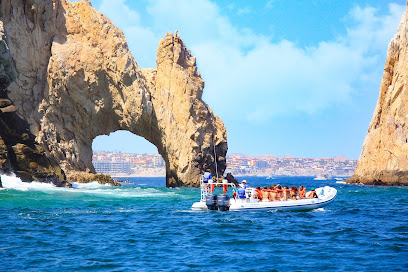
Cultural Pavilion of the Republic
Experience the vibrant essence of Mexican culture at the Cultural Pavilion of the Republic in Cabo San Lucas, a hub for art, performances, and community events.

Cannery Beach
Experience the idyllic charm of Cannery Beach in Cabo San Lucas, a perfect blend of relaxation, beauty, and vibrant local culture.

Buccaneer Queen
Experience the breathtaking beauty of Cabo San Lucas with the Buccaneer Queen, your gateway to thrilling boat tours and stunning marine adventures.
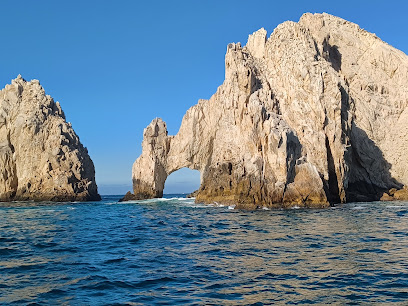
Cerro de la Z
Discover stunning panoramic views of Cabo San Lucas at Cerro de la Z, an essential stop for nature lovers and photographers alike.
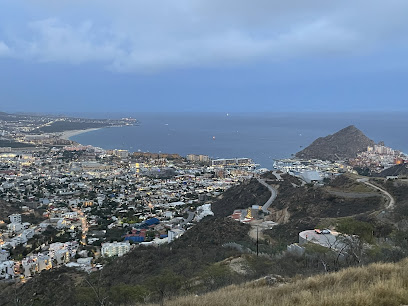
Cabo Escape Tours
Discover the beauty of Cabo San Lucas through unforgettable boat tours, whale watching, and sunset cruises with Cabo Escape Tours.

End of the Pier
Discover the serene beauty of End of the Pier, Cabo San Lucas, where breathtaking views and vibrant local culture await every tourist.

Whale Watch Cabo
Experience the thrill of whale watching in Cabo San Lucas with Whale Watch Cabo, where adventure meets breathtaking natural beauty and unforgettable memories.

Museum of Natural History in Cabo San Lucas
Discover the rich biodiversity of Baja California Sur at the Museum of Natural History in Cabo San Lucas, a must-visit for nature lovers and curious minds.

Sea Cabo Activities
Discover the thrill of water sports in Cabo San Lucas at Sea Cabo Activities, your ultimate adventure hub for unforgettable ocean experiences.

Mt. Solmar
Experience the breathtaking views and natural beauty of Mt. Solmar, a premier hiking destination in Cabo San Lucas, Baja California Sur.

Pelican Rock
Discover the stunning Pelican Rock in Cabo San Lucas, a vibrant marine paradise ideal for snorkeling, diving, and breathtaking ocean views.

Private Cabo Bello Beach
Experience the pristine beauty and tranquility of Private Cabo Bello Beach, a hidden gem on the stunning coast of Cabo San Lucas.
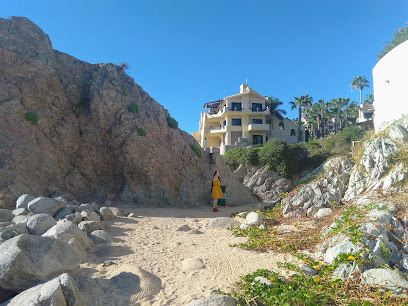
Vidanta Golf at Vidanta Los Cabos
Discover an exceptional golfing experience at Vidanta Golf, Los Cabos, where stunning views meet world-class amenities in Baja California Sur.
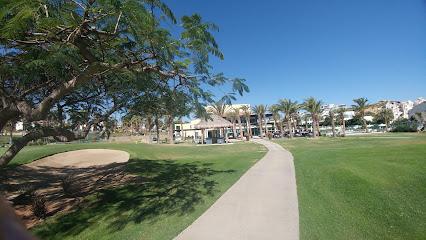
CaboTrek
Experience the thrill of whale watching and explore Cabo San Lucas with CaboTrek's expert-guided tours and boat rentals.

Essential places to dine
The Office on the Beach
Experience authentic Mexican cuisine at The Office on the Beach in Cabo San Lucas – where every meal comes with breathtaking ocean views.

Campestre
Discover authentic Mexican cuisine at Campestre, your go-to destination for delicious breakfasts and vibrant atmosphere in Cabo San Lucas.

Sunset Monalisa
Experience breathtaking views and exquisite Mediterranean cuisine at Sunset Monalisa in Cabo San Lucas.

Salvatore G's
Experience authentic Italian cuisine at Salvatore G's in Cabo San Lucas - where every dish is crafted with passion and tradition.

Los Tres Gallos
Savor authentic Mexican cuisine at Los Tres Gallos in Cabo San Lucas – where tradition meets flavor in every delicious bite.

Edith's
Experience authentic Mexican cuisine with fresh seafood and succulent meats at Edith's in Cabo San Lucas.
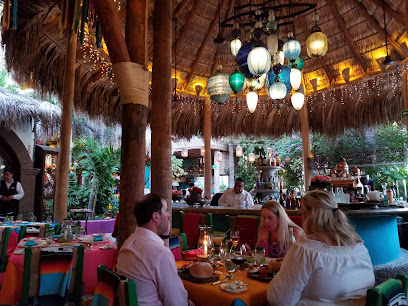
El Peregrino
Discover authentic Mexican cuisine and fresh seafood at El Peregrino in Cabo San Lucas—where every meal is a celebration of flavor.

Outpost
Experience culinary excellence at Outpost in Cabo San Lucas - where vibrant flavors meet an inviting atmosphere.

Hacienda Cocina y Cantina
Experience authentic Mexican cuisine with stunning ocean views at Hacienda Cocina y Cantina in Cabo San Lucas.

Metate Cabo
Experience authentic Mexican cuisine at Metate Cabo—your go-to destination for breakfast and brunch in Cabo San Lucas.

Restaurante Maria Corona
Experience authentic Mexican cuisine at Restaurante Maria Corona in Cabo San Lucas - where tradition meets flavor in a vibrant setting.

Panache
Discover exquisite European cuisine at Panache in Cabo San Lucas - where every dish tells a story of flavor and tradition.
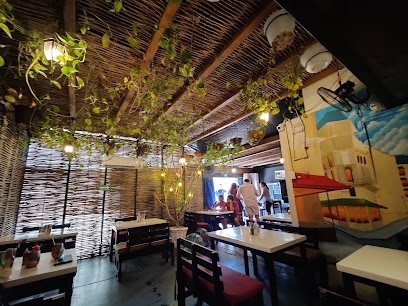
London Bistro & Café (San Lucas)
Experience culinary excellence at London Bistro & Café in Cabo San Lucas – where delicious crepes meet expertly brewed espresso.

RosaNegra Latin American Cuisine
Discover RosaNegra in Cabo San Lucas: Where Latin American Cuisine Meets Unforgettable Views and Exquisite Service.

Los Deseos
Experience authentic Mexican flavors in the heart of Cabo San Lucas at Los Deseos - a culinary treasure by the marina.

Markets, malls and hidden boutiques
Plaza Puerto Paraiso
Discover the vibrant Plaza Puerto Paraiso in Cabo San Lucas, a shopping mall offering diverse shops, dining options, and local art in a stunning seaside setting.

Patio Los Cabos
Discover the vibrant shopping scene at Patio Los Cabos, where local culture meets modern retail in the heart of Cabo San Lucas.

Plaza Bonita
Discover shopping, dining, and culture at Plaza Bonita, the vibrant heart of Cabo San Lucas, where unique finds and culinary delights await.

Luxury Avenue Los Cabos
Experience the pinnacle of luxury shopping and gourmet dining at Luxury Avenue Los Cabos, where elegance meets the stunning marina views.
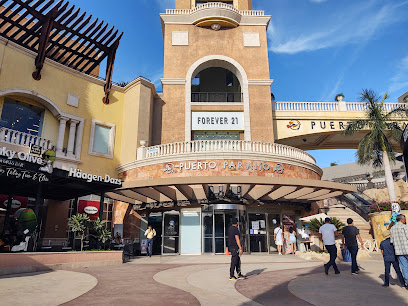
La Coyota
Discover unique artistic handicrafts and vibrant local culture at La Coyota, Cabo San Lucas' premier craft store.

Back to the Rack Cabo San Lucas
Explore Back to the Rack Cabo San Lucas for unique, upscale consignment clothing and accessories in the heart of Downtown.

Cactus Crafts and Souvenirs
Explore Cactus Crafts and Souvenirs in Cabo San Lucas for unique handcrafted treasures that embody the spirit of Baja California Sur.

Eclectic Array Marina
Explore the vibrant Eclectic Array Marina, a unique gift shop in Cabo San Lucas, offering exquisite clothing, jewelry, and accessories that celebrate local culture.
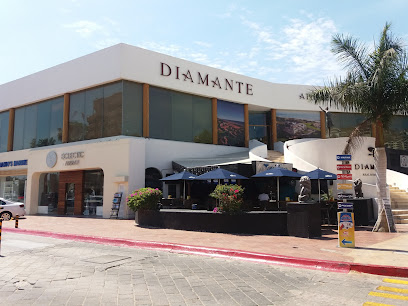
Mr. MUSTACHE SHOP
Explore the vibrant offerings of Mr. MUSTACHE SHOP, the premier souvenir store in Cabo San Lucas, where each item tells a story of local culture.

Pepita's Magic of the Moon
Experience the vibrant artistry of Cabo San Lucas at Pepita's Magic of the Moon, your go-to boutique for unique clothing and handcrafted textiles.
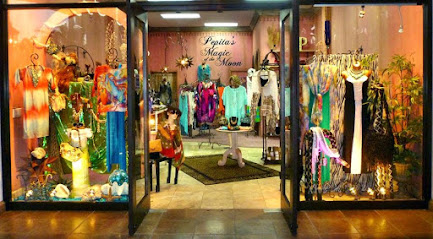
Cabostyle
Discover the best beachwear and accessories at Cabostyle in Cabo San Lucas, where fashion meets the sun and surf.

London Boutique
Explore unique fashion finds at London Boutique, a stylish clothing store in Cabo San Lucas offering trendy apparel and accessories.

Drop N Shop Cabo San Lucas
Explore Drop N Shop Cabo San Lucas for unique souvenirs and local treasures in the heart of Baja California Sur.

Rumbo Shop Hotel Paradisus Los Cabos
Discover unique souvenirs and local crafts at Rumbo Shop Hotel Paradisus Los Cabos, where Cabo's vibrant culture comes to life in every gift.

VÍA PARAISO
Experience the best of shopping, dining, and entertainment at Vía Paraíso, Cabo San Lucas' premier shopping mall.

Essential bars & hidden hideouts
Mango Deck
Experience the vibrant flavors and stunning ocean views at Mango Deck, Cabo San Lucas' go-to spot for grilled delights, sushi, and breakfast favorites.

The Office on the Beach
Experience the vibrant flavors of Cabo San Lucas at The Office on the Beach, where delicious Mexican cuisine meets stunning ocean views.

Happy Ending Cantina
Experience the vibrant atmosphere and local flavors at Happy Ending Cantina in Cabo San Lucas, where good times and great food await.

El Squid Roe - Cabo Bar & Restaurant
Experience the lively atmosphere and delicious grill offerings at El Squid Roe, Cabo San Lucas' ultimate bar and nightclub destination.
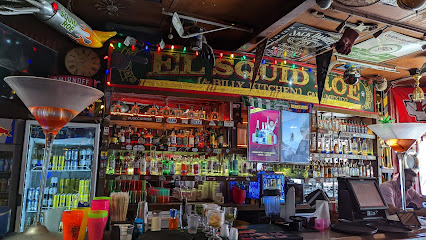
The Sand Bar
Experience the perfect blend of relaxation and flavor at The Sand Bar in Cabo San Lucas, where beachside dining meets rejuvenating spa treatments.

WTF Burger Bar
Experience the ultimate burger adventure at WTF Burger Bar in Cabo San Lucas, where delicious American cuisine meets a vibrant sports bar atmosphere.

Latitude 22+ Roadhouse
Experience the vibrant flavors of American grill cuisine at Latitude 22+ Roadhouse, a must-visit restaurant in Cabo San Lucas.
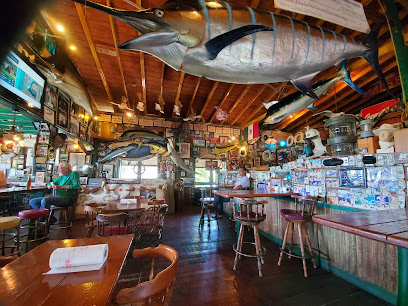
Tipsy Bar
Discover the vibrant nightlife at Tipsy Bar, where delicious drinks and a lively atmosphere await in the heart of Cabo San Lucas.

Dos Jimmys Signature Bar
Discover the lively atmosphere and delicious offerings at Dos Jimmys Signature Bar in Cabo San Lucas, your perfect nightlife destination.

The Jungle Bar
Experience the vibrant nightlife of Cabo San Lucas at The Jungle Bar, where rock music meets expertly crafted cocktails in an electric atmosphere.

Fumari Café
Enjoy exquisite coffee and a relaxing atmosphere at Fumari Café, a hidden gem in the heart of Cabo San Lucas, perfect for unwinding after adventures.

Monkey Business Bar
Experience the vibrant atmosphere of Monkey Business Bar in Cabo San Lucas, where delicious cocktails and fast food await you in a tropical paradise.

Milky Beach Cabo
Discover culinary delights and breathtaking views at Milky Beach Cabo, the ultimate beachfront grill and bar in Cabo San Lucas, Mexico.

Sancho's Bar
Discover the lively atmosphere of Sancho's Bar in Cabo San Lucas, where delicious cocktails and vibrant nightlife await visitors.

The Nowhere Bar
Discover vibrant nightlife and a friendly atmosphere at The Nowhere Bar, Cabo San Lucas's ultimate dance club and bar experience.

Local Phrases about Los Cabos
-
- HelloHola
[oh-lah] - GoodbyeAdiós
[ah-dee-ohs] - YesSí
[see] - NoNo
[noh] - Please/You're welcomePor favor/De nada
[por fah-vor/deh nah-dah] - Thank youGracias
[grah-see-ahs] - Excuse me/SorryDisculpe/Perdón
[dees-kool-peh/pehr-dohn] - How are you?¿Cómo estás?
[koh-moh ehs-tahs] - Fine. And you?Bien. ¿Y tú?
[byen. ee too] - Do you speak English?¿Hablas inglés?
[ah-blahs een-glehs] - I don't understandNo entiendo
[noh ehn-tyen-doh]
- HelloHola
-
- I'd like to see the menu, pleaseMe gustaría ver el menú, por favor
[meh goos-tah-ree-ah vehr ehl meh-noo, por fah-vor] - I don't eat meatNo como carne
[noh koh-moh kahr-neh] - Cheers!¡Salud!
[sah-lood] - I would like to pay, pleaseMe gustaría pagar, por favor
[meh goos-tah-ree-ah pah-gar, por fah-vor]
- I'd like to see the menu, pleaseMe gustaría ver el menú, por favor
-
- Help!¡Ayuda!
[ah-yoo-dah] - Go away!¡Vete!
[veh-teh] - Call the Police!¡Llama a la policía!
[yah-mah ah lah poh-lee-see-ah] - Call a doctor!¡Llama a un médico!
[yah-mah ah oon meh-dee-koh] - I'm lostEstoy perdido
[ehs-toy pehr-dee-doh] - I'm illEstoy enfermo
[ehs-toy ehn-fehr-moh]
- Help!¡Ayuda!
-
- I'd like to buy...Me gustaría comprar...
[meh goos-tah-ree-ah kohm-prahr...] - I'm just lookingSólo estoy mirando
[soh-loh ehs-toy mee-rahn-doh] - How much is it?¿Cuánto cuesta?
[kwan-toh kwehs-tah] - That's too expensiveEsto es muy caro
[ehs-toh ehs moo-ee kah-roh] - Can you lower the price?¿Puede bajar el precio?
[pweh-deh bah-har ehl pree-syoh]
- I'd like to buy...Me gustaría comprar...
-
- What time is it?¿Qué hora es?
[keh oh-rah ehs] - It's one o'clockEs la una en punto
[ehs lah oo-nah ehn poon-toh] - Half past (10)Las diez y media
[lahs dyehs ee meh-dyah] - MorningMañana
[mah-nyah-nah] - AfternoonTarde
[tahr-deh] - EveningNoche
[noh-cheh] - YesterdayAyer
[ah-yehr] - TodayHoy
[oy] - TomorrowMañana
[mah-nyah-nah] - 1Uno
[oo-noh] - 2Dos
[dohs] - 3Tres
[trehs] - 4Cuatro
[kwah-troh] - 5Cinco
[seen-koh] - 6Seis
[says] - 7Siete
[syeh-teh] - 8Ocho
[oh-choh] - 9Nueve
[nweh-veh] - 10Diez
[dyehs]
- What time is it?¿Qué hora es?
-
- Where's a/the...?¿Dónde está...?
[dohn-deh ehs-tah] - What's the address?¿Cuál es la dirección?
[kwal ehs lah dee-rehk-syohn] - Can you show me (on the map)?¿Puedes mostrarme (en el mapa)?
[pweh-dehs mohs-trar-meh (ehn ehl mah-pah)] - When's the next (bus)?¿Cuándo es el próximo (autobús)?
[kwan-doh ehs ehl prohk-see-moh (ow-toh-boos)] - A ticket (to ....)Un boleto (para ....)
[oon boh-leh-toh (pah-rah)]
- Where's a/the...?¿Dónde está...?
History of Los Cabos
-
Before Spanish explorers arrived, the Los Cabos region was inhabited by the Pericúes, an indigenous group known for their hunter-gatherer lifestyle. They lived in harmony with the land, utilizing its resources to sustain their communities. The Pericúes were skilled fishermen and crafted tools and weapons from shells and bones.
-
In 1535, the Spanish explorer Hernán Cortés arrived in the Los Cabos area, seeking new territories and riches. Although the region did not yield the treasures Cortés was searching for, it marked the beginning of European interest in Baja California. The Spanish presence introduced new dynamics to the indigenous cultures and ecosystems.
-
During the 16th and 17th centuries, the waters around Los Cabos became a notorious haven for pirates. The natural harbors of Cabo San Lucas provided refuge for buccaneers who attacked Spanish galleons laden with goods from the New World. Legends of pirate treasure and hidden coves still capture the imagination of visitors today.
-
In the late 17th century, Jesuit missionaries began establishing missions throughout Baja California, including the Los Cabos region. These missions aimed to convert the indigenous populations to Christianity and introduced new agricultural practices. The Mission of San José del Cabo Añuití, founded in 1730, played a significant role in shaping the area's cultural landscape.
-
Following Mexico's independence from Spain in 1821, the Baja California peninsula, including Los Cabos, became part of the newly independent nation. The region experienced a period of transformation as it adapted to new political and economic realities. Los Cabos began to develop its own identity within the broader context of Mexican history.
-
The 20th century saw the rise of Los Cabos as a premier tourist destination. The construction of the Transpeninsular Highway in the 1970s connected the region to the rest of Mexico, facilitating travel and commerce. The area's natural beauty, pristine beaches, and vibrant marine life attracted visitors from around the world, leading to the development of luxury resorts and a thriving tourism industry.
-
Los Cabos is home to a rich tapestry of cultural festivals that celebrate its diverse heritage. Events such as the San José del Cabo Art Walk, the Los Cabos International Film Festival, and traditional Mexican fiestas offer visitors a glimpse into the vibrant cultural life of the region. These celebrations highlight the fusion of indigenous, Spanish, and modern influences that define Los Cabos today.
Los Cabos Essentials
-
Los Cabos is served by Los Cabos International Airport (SJD), located near San José del Cabo. Direct flights are available from many major cities in North America. Alternatively, visitors can fly into Tijuana and take a domestic flight to Los Cabos. Another option is to drive from the United States, though this is a longer journey. There are also cruise ships that dock at Cabo San Lucas, providing another means of arrival.
-
Transportation in Los Cabos includes taxis, rental cars, and public buses. Taxis are readily available but can be expensive, especially for longer trips. Renting a car provides flexibility for exploring the region, but be aware that traffic can be chaotic. Public buses are a budget-friendly option, with routes connecting Cabo San Lucas and San José del Cabo. Ride-sharing services are also available, though less common. Bicycles and scooters can be rented for short distances and recreational use.
-
The official currency in Mexico is the Mexican Peso (MXN). Credit and debit cards are widely accepted, but it is advisable to carry some cash, particularly for small purchases or in rural areas. ATMs are plentiful in tourist areas, but be cautious of fees and always use machines located in secure places. Currency exchange offices and banks offer competitive rates for exchanging foreign currency.
-
Los Cabos is generally safe for tourists, but it is essential to exercise caution. Avoid walking alone at night, especially in less populated areas. The downtown areas of Cabo San Lucas and San José del Cabo are usually safe, but be wary of pickpockets in crowded places. Areas such as Colonia El Arenal and Colonia Matamoros have higher crime rates and should be avoided. Always keep an eye on your belongings and avoid displaying valuable items.
-
In case of an emergency, dial 911 for assistance. Los Cabos has several hospitals and medical clinics, including the H+ Hospital in San José del Cabo and the American Medical Center in Cabo San Lucas. Pharmacies are widely available for minor health issues. It is recommended to have travel insurance that covers medical emergencies. For consular assistance, contact your respective embassy or consulate in Mexico City.
-
Fashion: Do wear lightweight, comfortable clothing and bring a hat and sunscreen for protection against the sun. Avoid overly revealing clothing outside of beach areas. Religion: Do respect local religious customs. When visiting churches, dress modestly and be quiet and respectful. Public Transport: Do use public buses for an economical way to get around. Don't engage in loud conversations or eat on public transport. Greetings: Do greet people with a handshake. A friendly 'Hola' or 'Buenos días' is appreciated. Eating & Drinking: Do try local cuisine and seafood specialties. Don't drink tap water; opt for bottled water instead.
-
To experience Los Cabos like a local, visit the local markets such as Mercado Organico in San José del Cabo, where you can buy fresh produce and artisanal goods. Engage with locals, who are often friendly and willing to share insights about the culture and history. Enjoy a sunset at Playa del Amor or take a boat tour to see El Arco. Don't miss out on local events and festivals for an authentic experience. For a unique adventure, try surfing at Costa Azul or snorkeling in the Cabo Pulmo National Marine Park.
Nearby Cities to Los Cabos
-
Things To Do in Puerto Vallarta
-
Things To Do in Guadalajara
-
Things To Do in Ixtapa-Zihuatanejo
-
Things To Do in Guanajuato
-
Things To Do in Bisbee
-
Things To Do in San Miguel de Allende
-
Things To Do in Monterrey
-
Things To Do in Queretaro
-
Things To Do in El Paso
-
Things To Do in Tucson
-
Things To Do in Las Cruces
-
Things To Do in White Sands
-
Things To Do in Laredo
-
Things To Do in Truth or Consequences
-
Things To Do in Chandler











